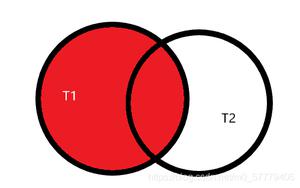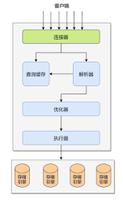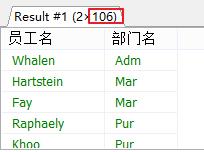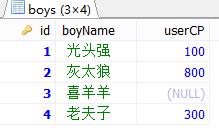多表查询(联表查询,子查询),pymysql模块

一、多表查询
多表联合查询# 方案1:链表把多张物理表合并成一张虚拟表,再进行后续查询
#======>内链接:保留两张表有对应关系的记录
select * from emp,dep where emp.dep_id=dep.id;
select dep.name,emp.name from emp inner join dep on emp.dep_id=dep.id
where dep.name = "技术";
#======>左链接:在内链接的基础上保留左表的记录
select * from emp left join dep on emp.dep_id=dep.id;
#======>右链接:在内链接的基础上保留右表的记录
select * from emp right join dep on emp.dep_id=dep.id;
#======>全外链接:在内链接的基础上保留左右表的记录
full join
select * from emp left join dep on emp.dep_id=dep.id
union
select * from emp right join dep on emp.dep_id=dep.id;
示例1:查询所有部门名及对应的员工个数
select dep.name,count(emp.id) from emp right join dep on emp.dep_id = dep.id
group by dep.name
;
select dep.name,count(emp.id) from emp right join dep on emp.dep_id = dep.id
group by dep.name
having count(emp.id) < 2
;
#示例2:即找出年龄大于25岁的员工以及员工所在的部门
select emp.name,dep.name from emp inner join dep on emp.dep_id = dep.id where age > 25;
#示例3:以内连接的方式查询employee和department表,并且以age字段的升序方式显示
# 把多张表链接到一起:
select * from
(select emp.*,dep.name as dep_name from emp inner join dep on emp.dep_id = dep.id) as t1
inner join
dep
on t1.dep_id = dep.id
;
select * from emp
inner join dep
on emp.dep_id = dep.id
inner join dep as t1
on t1.id = dep.id;
# 查询部门内最新入职的员工
select * from employee
inner join
(select depart_id,max(hire_date) as maxd from employee group by depart_id) as t1
on employee.depart_id = t1.depart_id
where employee.hire_date = t1.maxd
;
# 方案2:子查询
从一张表中查询出结果,用该结果作为查
询下一张表的过滤条件
select * from employee
where hire_date = (select max(hire_date) from employee);
#查询平均年龄在25岁以上的部门名
select * from dep where id in
(select dep_id from emp group by dep_id having avg(age) > 25);
#查看技术部员工姓名
select * from emp where dep_id in
(select id from dep where name="技术");
#查看不足1人的部门名(子查询得到的是有人的部门id)
select * from dep where id notin (select distinct dep_id from emp);
select * from dep where exists (select * from emp where id>3);
二、pymysql模块
import pymysqlconn
=pymysql.connect(host="127.0.0.1",port=3306,user="root",password="123",database="db4",charset="utf8mb4")#游标cursor=conn.cursor() #执行完毕返回的结果集默认以元组显示
# cursor.execute("insert into user(name,pwd) values("egon","123"),("tom","456"),("jack","111");")
# sql="insert into user(name,pwd) values("%s","%s");" %("lili","123")
# cursor.execute(sql)
# %s不要加引号
# cursor.execute("insert into user(name,pwd) values(%s,%s);",("kkk","123"))
username = input("username>>>: ").strip()
password = input("password>>>: ").strip()
# sql = "select * from user where name="%s" and pwd="%s"" %(username,password)
# select * from user where name="egon" -- hello" and pwd="%s"
# select * from user where name="xxx" or 1=1 -- hello" and pwd="%s";
# rows=cursor.execute(sql)
rows=cursor.execute("select * from user where name=%s and pwd=%s",(username,password))
if rows:
print("ok")
else:
print("no")
conn.commit()
cursor.close()
conn.close()
三、
四、
五、
六、
七、
八、
以上是 多表查询(联表查询,子查询),pymysql模块 的全部内容, 来源链接: utcz.com/z/530917.html









